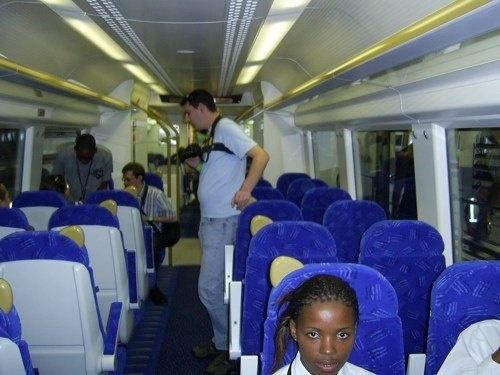Within five hours of its launch, the Gautrain’s service between Pretoria and Johannesburg had attracted more than 7,000 commuters.
The figure was considered groundbreaking for a public train established to reduce traffic between the province’s two economic hubs. At its maximum allowed speed of 160km per hour, it’s the fastest mode of transport in South Africa beside air travel.
“Gautrain is the future for public transport in South Africa,” said Transport Minister S’bu Ndebele, hinting that in future the government may look at introducing such high-speed trains elsewhere. Gautrain offers a reliable alternative for motorists who were previously not comfortable with the country’s public transport. “Leave your car at home, you can use it over weekend,” Ndebele said.
Years of hard work
The Gauteng Provincial Government, then led by former premier Mbhazima Shilowa, launched plans for a rapid rail system in 2004.
“We travelled the length and breadth of the world, looking for technology,” recalled MEC Qedani Mahlangu.
She said they inspected train stations in densely populated areas like London and Paris, and also visited countries like Spain and Switzerland to gain insight into rapid rail systems.
The Bombela Consortium, which comprises international groups Bombardier and Bouygues Travaux Publics, as well as South African civil contractor Murray & Roberts and the Strategic Partners Group, became a private sector partner to Gauteng’s provincial government in 2005. Gautrain CEO Jack van der Merwe said the government’s resolution to complete the project was commendable.
“You can’t tackle a project like this without political support, you’ve got to have it,” he said.
Up to 8,000 people worked on Gautrain during its construction phase. Mahlangu said the consortium also recruited South Africans who had left the country.
Focus on infrastructure
Now, the government is spending R30.2bn (US$4.5bn) to improve services of the Metrorail trains, which transport millions of South Africans staying in townships around Gauteng, KwaZulu-Natal, Eastern Cape and Western Cape provinces daily. Ndebele said the government’s plan to upgrade metro trains too is so that “you don’t have a Gautrain that’s comfortable and fast, but have a Metrorail that’s pedestrian”.
Another critical project is the Moloto Rail Corridor in Mpumalanga province, which would see Metrorail trains transporting thousands of Mpumalanga residents who work in Pretoria.
The government spends millions of rands each year on subsidies for private company buses for Moloto commuters.
“Already we’re paying. We have to ask if that is the most effective way of using taxpayers’ money,” Ndebele said.
Bongani Nkosi





















